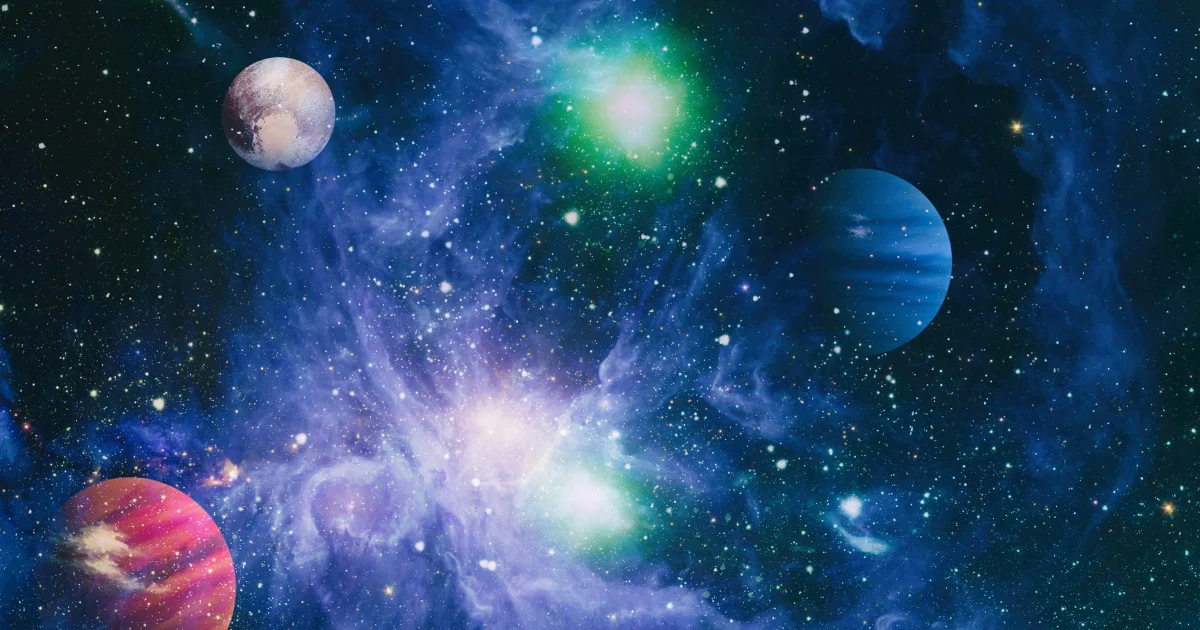Mariner 4’s Historic Breakthrough (1965)
First Flyby Images from Deep Space
NASA’s Mariner 4 was the first spacecraft to take close-up pictures of Mars in 1965. It flew within 6,118 miles (9,846 kilometers) of the surface of Mars and took 21 blurry black-and-white pictures that revolutionized space exploration forever. These pictures gave people their first actual look at the surface of another world, which looked like a cratered moon and dashed many hopes of a green, life-supporting Mars.
The “Color-by-Numbers” Experiment
When there was a delay in processing the images, the NASA mission team came up with a color-coded way to show the data. They gave colors to certain numbers, making a simple color graphic. This speculation turned out to be surprisingly correct, sparking interest and paving the way for new ways of seeing things in space research.
Viking 1 Lands on Mars (1976)
First Image from the Martian Surface
On July 20, 1976, Viking 1 made history by sending back the first picture ever obtained from the surface of Mars. The rocky, dry landscape depicted in high resolution proved that the landing was successful and that the surface was dead, at least at first appearance.
Making it possible for future exploration
The picture killed short-term hopes of life on Mars, but it gave long-term goals new vitality. For the first time, scientists had a solid base on Mars from which to do in-situ experiments and take panoramic pictures. This set the stage for decades of future missions.
Viking Orbiter’s Aerial View (1980)
Mapping the Valles Marineris
The Viking orbiters, which flew with the landers, gave us a view from above that was unlike any other. The Viking 1 orbiter took a lot of pictures of Valles Marineris in 1980. These pictures were put together to provide a beautiful mosaic of the area, which is often called the “Grand Canyon of Mars.” These wide-angle pictures gave an unprecedented scale and context, which is very important for studying geology and the atmosphere.
Importance of Orbital Imaging
These early pictures of the orbit were also very important for future landing operations. They helped us find safe places to land and locations with a lot of scientific value, which changed how we plan to explore other planets.
Pathfinder and Sojourner’s Return (1997)
The First Rover to Explore Mars
The First Rover to Explore Mars In 1997, the Mars Pathfinder mission sent Sojourner, a rover the size of a microwave oven, to Mars. It attracted the world’s attention. It traveled across the Martian landscape for 83 days, transmitting back clear pictures and videos of Martian rocks, much longer than the week it was supposed to last.
Public Engagement in the Internet Era
People could follow Sojourner’s adventures in real time on the internet, which was different from past missions. Millions of people could see updates and pictures online, which changed how people were interested in space science. It was Mars for the modern world.
Spirit and Opportunity Revolutionize Surface Imaging (2004)
Advanced Roving Cameras
Spirit and Opportunity’s dual panoramic and tiny cameras recorded the essence of Martian geology in a way that had never been done before. They put their cameras on masts for wide-angle shots and on robotic arms for close-ups.
Unexpected Length and New Discoveries
Both rovers lived much longer than the 90 days they were supposed to. Spirit lived for more than six years, and Opportunity lived for almost fifteen. They found mineral “blueberries,” which could be indications of former water, and they filmed the first dust devils on Mars.
The Power of MRO's HiRISE (2006–Present)
Mars' surface is crystal clear.
The game altered radically when NASA’s Mars Reconnaissance Orbiter (MRO) got to Mars in 2006. The HiRISE (High-Resolution Imaging Science Experiment) camera on the spacecraft took pictures of Mars that were clearer than any that had been taken before. From space, HiRISE can see things that are only 1 meter across. This lets you see individual boulders, dunes, and layered rock formations with amazing accuracy.
Researchers could look at things in great detail without having to deploy a rover because of this clarity. The camera also showed new things on Mars, like seasonal slope streaks that could mean flowing brine or dry granular flows.
Helping with landing and exploration sites
In addition to helping scientists learn more about Mars, HiRISE has also helped choose landing spots for rovers like Curiosity, Perseverance, and even future human missions. It gives precise maps of the region and analyzes hazards to make landings safer and exploration more useful.
Curiosity’s Technological Leap (2012)
Arm-Mounted Cameras and Color Imagery
The Curiosity rover brought new scientific tools to the surface of Mars in 2012. It included 17 cameras, including the powerful Mastcam and MAHLI (Mars Hand Lens Imager), which could both take high-resolution color photographs. These cameras could focus, zoom, and take 3D stereoscopic pictures.
Science Through High-Resolution Imaging
Curiosity has looked at everything from microscopic stones to big geological outcrops with its camera on its arm. Scientists looked at sediment layers in Gale Crater using its images, which showed that Mars used to have lakes and rivers. Its images also helped set the onboard instruments and direct the robots.
Perseverance’s Cutting-Edge Visual Systems (2021)
High-Speed Landing Cameras
Perseverance, which landed in February 2021, didn’t simply make Curiosity better; it changed how we take pictures of Mars. For the first time, the landing procedure was recorded on camera at a fast speed and high resolution. Cameras caught the moment when its parachute opened and its rocket-powered sky crane brought the rover down to the surface of Mars.
Color, Hazard-Avoidance & AI Navigation
Perseverance has 23 cameras, including enhanced color hazard-avoidance cameras and AI-powered navigation systems. Its cameras help with self-driving, steer clear of obstacles, and help pick out rock targets for drilling. This makes exploration more efficient and thorough, getting the most research out of every Martian sol.
The Flight of Ingenuity (2021–2023)
For the First Time, Aerial Imaging on Mars
Ingenuity, a small helicopter that became the first vehicle to fly with power on another planet, was attached to Perseverance. It took amazing aerial photos from as high as 40 feet in the air with a commercial color camera.
Looking at Future Pathways from Above
Ingenuity helped plan safer and more effective travel routes, assessed terrain, and snapped images of Perseverance from above during 72 successful flights. Its achievement has paved the way for future aerial explorers, such as scouting drones or cargo delivery vehicles that could be used on future human trips.
Technological Milestones in Mars Imaging
Moving from Analog to Digital
Over the course of 60 years, imaging technology changed from blurry black-and-white pictures to clear, digital color ones. Modern cameras have megapixel resolutions and employ complex compression methods to send massive volumes of data from millions of kilometers distant.
The Role of AI and Automation
AI is quite important for both taking and looking at pictures these days. Rovers may choose which rocks to look at or avoid on their own, and orbiters can be programmed to take pictures of fresh craters or dust storms, making sure that the Martian environment is always changing.
Imaging Mars in Color and 3D
Multispectral and Panoramic Cameras
New cameras don’t simply see in color; they can see in a lot of different wavelengths, like infrared and ultraviolet. This helps scientists find ancient indications of life by letting them figure out what rocks and soils are made of from far away.
Topography and Terrain Mapping
3D stereo imaging from orbiters and rovers has helped make precise topography maps of Mars. These are very important for planning missions, studying geology, and maybe building homes and resource stations for human explorers.
Imaging and Public Perception
The Cultural Impact of Mars Imagery
People have been fascinated with pictures of Mars since Mariner 4. They’ve been in textbooks, films, and even art shows. They help bring Mars closer to Earth so that regular people may see space exploration happen in real time.
Inspiring Future Generations
These pictures inspire the next generation of scientists, engineers, and space fans. In schools, students look at pictures of Martian landscapes, and citizen scientists help sort the terrain online. Imagery is more than simply data; it’s a way to get to the stars.
Problems with imaging on Mars: dust, distance, and sending data
Mars has a lot of problems. Dust storms happen a lot and can block lenses, the cold can hurt equipment, and the long distance slows down transmissions and limits bandwidth. But engineers are always coming up with new ways to get around these problems.
New ideas to get around problems
Lens coverings, radiation protection, and data compression algorithms are some of the solutions. Rovers now have extra cameras and self-cleaning features, which make sure that photography keeps going even in bad weather.
International Contributions to Mars Imaging: ESA, CNSA, and ISRO Missions
NASA isn’t the only one who is mapping Mars. The European Space Agency (ESA), the China National Space Administration (CNSA), and the Indian Space Research Organization (ISRO) have all sent missions into space with superior photographic equipment. ESA’s Mars Express and CNSA’s Tianwen-1 are two examples.
Sharing and working together on data around the world
Many of these missions add to global data archives, which lets scientists all across the world look at pictures of Mars. This encourages people to work together and speeds up the process of finding things.
The Future of Mars Imaging: Drone Swarms and Next-Gen Rovers
There will be even more advancements in the future. For example, there are currently plans for aerial drone swarms, satellite constellations, and hyperspectral imagers aboard rovers. These gadgets will give us more detailed information and a bigger view of the Martian terrain.
Getting ready for people to land
Imaging in the future will be very important for human exploration. Cameras will assist astronauts find safe places to live, find resources like water ice, and aid them land, explore, and build.

Business Consultant | Web designer & Developer | Social media Manager | SEO | Passionate Learner, I am deeply passionate about learning and continuously improving my skills.
My interests are diverse, ranging from music and singing to computers and programming languages, digital art, AI


